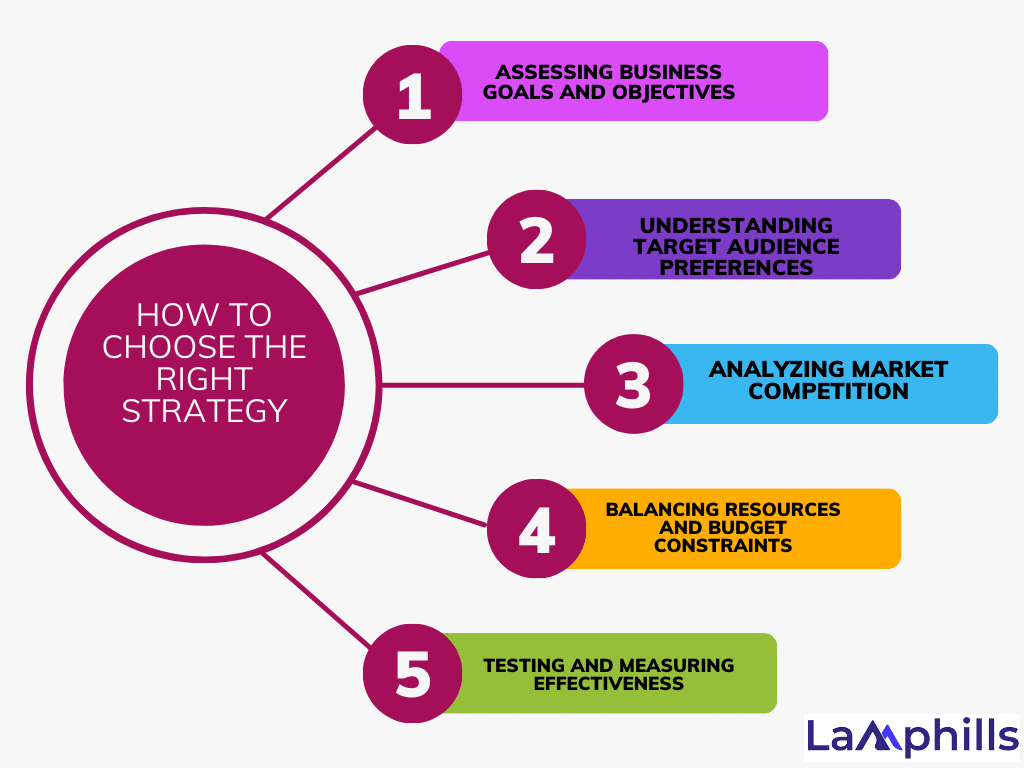When it comes to promoting a product or service, an effective advertising approach makes all the difference. As a content writer, I’ve witnessed how brands maneuver the complex advertising world. Comparative Vs competitive advertising are two popular tactics that frequently provoke disagreement among marketers. Both have advantages and disadvantages, but recognizing their differences is critical for developing a successful advert. In this article, I’ll provide insights to assist you in understanding the complexities and determining which one is best for your organization. Before we dig into each of these advertising styles, let’s be clear about our definitions. Some authors use “competitive” as a synonym for “comparative” when talking about advertising approaches, which can cause a bit of confusion when you’re doing research for a marketing strategy.
Key Takeaways
- Comparative advertising involves direct comparisons between products, highlighting specific advantages, while competitive advertising focuses on promoting a brand’s unique identity and strengths without mentioning competitors.
- Competitive advertising focuses on what makes your firm special. In many circumstances, your product may not even be mentioned in the conversation.
- An important factor in determining a brand’s performance when it comes to advertising tactics is knowing the distinctions between comparative and competitive advertising. Making the appropriate choice can be crucial for successful marketing, as each strategy has advantages and disadvantages.
What is Comparative Advertising?
Comparative advertising is a marketing approach that directly compares a company’s product or service to that of a competitor while emphasizing specific benefits. At its foundation, this method aims to persuade customers by demonstrating why one alternative is better than another. As a corporate content writer, I’ve seen this tactic in action, and I must say that it can be a strong tool when utilized correctly.
It’s a more comfortable approach because you’re offering things that are directly related to your expertise. You’re discussing features of your company that you’ve consciously worked hard to distinguish. That makes it harder for anyone to disagree with you! Additionally, comparative advertising shines in some conditions especially when you have a strong product that outperforms the competition.
In my early days as a content writer, I worked on a campaign for a business specializing in environmentally friendly cleaning goods. We decided to utilize comparison advertising to demonstrate how our product was not only more effective but also ecologically friendly than established products.
Our advertising included a video comparing the cleaning capability of our product to that of a leading brand. We demonstrated the identical dirty surface being cleaned side by side, with the eco-friendly product operating admirably while leaving no harmful residues. This strategy enabled us to target a growing market of environmentally concerned consumers seeking effective cleaning products without sacrificing their values.
The ads was a hit! Our sales increased significantly, and we received positive feedback from customers who appreciated the transparency in our messaging. It was a vivid lesson in the power of comparative advertising—not only can it boost sales, but it can also help brands carve out a niche in the marketplace.
Key Characteristics of Comparative Advertising
This video below will help with a better understanding what what comparative advertising is all about
- Direct Comparison: At its core, comparative advertising involves showcasing differences. It’s not just about saying, “Our product is great”; it’s about saying, “Our product is better than theirs.”
- Focus on Features: This type of advertising zeroes in on specific aspects of a product, making it easier for consumers to see why one option might be superior.
- Emotional Appeal: Comparative ads often tap into emotions, whether it’s humor or a sense of rivalry. This creates memorable content that resonates with audiences.
Examples of Successful Comparative Advertising Campaigns
Numerous successful campaigns have used comparative advertising to their advantage. Here are a couple of notable examples that illustrate how effective this strategy can be:
#1. Apple vs. PC
Apple launched one of the most well-known comparative advertising campaigns, with a series of adverts contrasting Mac computers with PCs. The commercials featured two characters: a casual, youthful “Mac” and a more corporate, elderly “PC.” Apple demonstrated the user-friendliness, innovation, and suitability of Macs for creative activities through witty speech and hilarious scenarios. The appeal of these advertisements resonated with consumers, making them memorable and engaging. As someone who has used both Mac and PC products, I found myself nodding along with the comments made in these commercials, which prompted me to contemplate switching.
#2. Verizon vs. AT&T
Another excellent example is Verizon’s “Can you hear me now?” campaign, which directly compared its network reliability to AT&T’s. The advertisements showed a man strolling around several sites, asking questions while his connection dropped anytime he spoke with an AT&T person. The straightforward, amusing message emphasized Verizon’s exceptional service, assisting people in understanding the benefits of using their network. I understand the annoyance of dropped calls, and this advertising resonated with many who have had similar situations, resulting in a shift in brand allegiance.
In summary, comparative advertising is a dynamic technique for emphasizing a product’s benefits over competitors. With its direct comparisons and emphasis on specific benefits, this method can help brands stand out in a competitive market.
However, it’s crucial to navigate this strategy with care, ensuring claims are accurate and resonate with consumers. As you consider how to position your brand, think about whether comparative advertising could be the right fit.
What is Competitive Advertising?
Competitive advertising is a marketing strategy that emphasizes a brand’s overall strengths and distinguishing characteristics without making direct comparisons to competing brands. Rather of openly declaring why one product is superior to another, competitive advertising seeks to develop a brand’s identity and value proposition. It is about demonstrating what distinguishes a brand and why customers should choose it over competitors.
Competitive advertising focuses on what makes your firm special. In many circumstances, your product may not even be mentioned in the conversation. Instead, the focus might be on your brand, including company values, employee culture, customer service, and any other intangibles you bring to the table.
It’s a more comfortable approach because you’re offering things that are directly related to your expertise. You’re discussing features of your company that you’ve consciously worked hard to distinguish. That makes it harder for anyone to disagree with you! Furthermore, competitive advertising is extremely effective in situations where brand identity and values are critical. If your company is focused on ethical standards or community involvement, this strategy enables you to create a narrative that connects with customers.
Key Characteristics of Competitive Advertising
- Emphasis on Brand Identity: This approach allows brands to build a distinct personality and showcase what makes them special.
- Highlighting Unique Selling Propositions (USPs): Competitive advertising focuses on the aspects that make a product stand out, like innovative features, customer service, or brand values.
- Positive Messaging: Rather than tearing down competitors, competitive ads build up their brand, creating a more positive brand image.
Examples of Successful Competitive Advertising Campaigns
There are numerous examples of brands successfully leveraging competitive advertising to strengthen their market position and connect with consumers. Here are a few standout campaigns that illustrate this approach:
#1. Nike’s “Just Do It” Campaign
Nike’s renowned “Just Do It” campaign is an excellent example of competitive advertising that prioritizes brand values over direct comparisons. Rather than contrasting their shoes with those of competitors, Nike’s advertisements emphasize empowerment and encouragement. I’ve seen several advertisements that show athletes overcoming hurdles, exceeding their limitations, and attaining greatness.
As someone who enjoys jogging, I’m often encouraged by these messages. The campaign establishes an emotional connection that makes me want to be a member of the Nike community, motivating me to feel that I can reach my fitness objectives regardless of whether I wear their shoes.
#2. Coca-Cola’s “Taste the Feeling” Campaign
Another excellent example is Coca-Cola’s “Taste the Feeling” campaign, which captures the essence of enjoying life’s basic pleasures with a Coke in hand. The advertisements highlight common experiences like family reunions, road vacations, and festivities without mentioning competition. This strategy highlights the brand’s identity and link to happiness and joy, encouraging customers to identify those emotions with Coca-Cola.
I recall seeing a television commercial where a group of people were eating, laughing, and enjoying each other’s company while drinking Coke. The advertisement did not mention any competitors; instead, it made me think about the simple delight of sharing moments with loved ones, confirming my commitment to the brand.
In other words, competitive advertising is a powerful strategy that emphasizes brand positioning, unique selling propositions, and emotional connections with consumers. However, by focusing on what makes a brand unique and appealing, companies can effectively differentiate themselves in the marketplace without resorting to direct comparisons with competitors.
Key Differences Between Comparative Vs Competitive Advertising
An important factor in determining a brand’s performance when it comes to advertising tactics is knowing the distinctions between comparative and competitive advertising. Making the appropriate choice can be crucial for successful marketing, as each strategy has advantages and disadvantages. Let us examine the principal distinctions between these tactics, decomposing them into five fundamental aspects that demonstrate their disparities.
#1. Approach: Direct vs. Indirect Comparison
The most fundamental difference between comparative Vs competitive advertising lies in their approach.
- Comparative Advertising: This method involves a direct comparison between a brand’s product and its competitors. Brands explicitly mention their rivals and highlight specific features, benefits, or prices. This strategy is straightforward and can be very effective, especially when a brand has clear advantages over competitors.
- Competitive Advertising: In contrast, competitive advertising takes a more indirect approach. It focuses on promoting a brand’s strengths and unique selling propositions without mentioning competitors. For example, during my time working on a campaign for an organic skincare line, we emphasized our use of natural ingredients and ethical sourcing practices. We didn’t mention rival brands; instead, we told stories about our customers’ experiences with our products, which allowed us to position ourselves uniquely in the market without direct comparisons.
#2. Audience Perception: Influencing Consumer Choices
Another critical difference between comparative Vs competitive advertising lies in how each strategy influences consumer perceptions and decisions.
- Comparative Advertising: This approach can create a sense of urgency for consumers. When brands show how they outperform competitors, it can lead consumers to feel that they must choose the superior product to avoid missing out. I remember a commercial from a well-known phone company that directly compared its camera features to a rival’s. The ad effectively convinced many consumers, including myself, that upgrading to their model would significantly enhance our photography skills.
- Competitive Advertising: On the flip side, competitive advertising builds brand loyalty by connecting emotionally with consumers. By emphasizing a brand’s identity and values, it helps create a sense of community and belonging. For example, I once saw a campaign for a hiking gear company that focused on the adventurous spirit of its customers rather than comparing its products to others. The ads featured stunning visuals of nature and testimonials from satisfied customers sharing their adventures, which made me feel inspired and connected to the brand. This emotional resonance often leads to long-term loyalty.
#3. Legal and Ethical Considerations: Navigating Challenges
Legal and ethical considerations are crucial when choosing between these two strategies.
- Comparative Advertising: This method can open brands up to legal challenges if claims made about competitors are seen as misleading or defamatory. For instance, I once read about a case where a brand was sued for making exaggerated claims about a competitor’s product. It serves as a reminder that while comparative advertising can be impactful, brands must ensure their claims are truthful and well-supported.
- Competitive Advertising: On the other hand, competitive advertising tends to face fewer legal hurdles because it avoids direct comparisons. By focusing on its own strengths without mentioning competitors, a brand can minimize the risk of legal challenges. I’ve worked with brands that choose this route precisely for this reason, allowing them to create powerful messaging without the worry of legal repercussions.
#4. Brand Image and Reputation: Shaping Consumer Trust
The impact of comparative Vs competitive advertising strategy on brand image and reputation is another significant difference.
- Comparative Advertising: This approach can sometimes risk damaging a brand’s reputation if perceived as aggressive or negative. Consumers may view a brand that attacks its competitors as desperate or insecure. I’ve seen this happen in various industries, where brands that engage in too much negative advertising often face backlash. It’s essential to strike a balance and ensure that the messaging doesn’t come off as overly aggressive.
- Competitive Advertising: Conversely, competitive advertising often enhances brand image and builds consumer trust. By focusing on its own strengths and values, a brand can cultivate a positive reputation.
#5. Overall Objectives: Driving Different Outcomes
Lastly, the ultimate objectives of comparative Vs competitive advertising strategy differ significantly.
- Comparative Advertising: The primary goal of this approach is often to capture market share quickly by convincing consumers to switch brands. For instance, in my work on a campaign for a new beverage, we aimed to entice consumers to try our product over a well-established competitor. The focus was on making an immediate impact and gaining traction in a crowded market.
Competitive Advertising: In contrast, the focus of competitive advertising is usually on building brand equity and long-term loyalty. This strategy aims to cultivate a brand image that resonates with consumers over time.
Trust me when I say that understanding the major differences between comparative and competitive advertising enables firms to make more educated marketing decisions. Whether you want to create a sense of urgency through direct comparisons or foster long-term loyalty through emotional connections, understanding the advantages and disadvantages of each method can help you navigate the complex advertising landscape. Examine how these distinctions match with your aims and values when you create your brand’s statement, and use that to guide your decision-making process.
How To Choose The Right Strategy

Choosing between comparative Vs competitive advertising isn’t just about preference; it’s about aligning your advertising strategy with your business goals and understanding your audience. With so many factors to consider, it can feel overwhelming. However, breaking it down into key elements can make the process more manageable. Here’s how to make an informed decision about which strategy is right for your business.
#1. Assessing Business Goals And Objectives
The first step in establishing the best advertising strategy is to examine your company’s goals and objectives. What are you aiming to accomplish? Are you launching a new product, aiming to increase market share, or strengthening brand loyalty?
However, if your goal is to establish brand loyalty over time, competitive advertising may be more appropriate. I recall a campaign for a family-owned business looking to establish itself as a community mainstay. By emphasizing its historical history and devotion to local foods without comparing itself to adjacent competitors, the restaurant built a devoted client base that felt personally linked to the brand.
#2. Understanding Target Audience Preferences
Understanding your target audience’s preferences is critical in determining the best strategy. What resonates with them? Are they more likely to respond to straight comparisons or emotive stories?
Conversely, if your target group is more pragmatic and prioritizes performance above emotional appeal, comparison advertising may be more effective. Consider the vehicle industry—ads that compare fuel efficiency, safety ratings, and pricing frequently resonate with people making large purchases.
#3. Analyzing Market Competition
The competitive environment also plays an important role in determining the best strategy. Take a moment to evaluate your competitors. What do they do? How do they position themselves? This can provide useful information on whether you should use a comparative or competitive advertising approach.
By extensively examining your competitors, you can spot weaknesses in their methods and determine how to effectively position your brand. If your competitors rely significantly on comparative marketing, a competitive approach may help you stand out as a more trustworthy and authentic solution.
#4. Balancing Resources And Budget Constraints
Another vital factor in choosing the right strategy is evaluating your resources and budget constraints. Both comparative and competitive advertising require investment, but the nature of that investment can differ.
Comparative advertising often requires more extensive market research to ensure claims are accurate and not misleading, which can drive up costs. When I was part of a team launching a fitness app, we faced a tight budget. We opted for competitive advertising, which allowed us to focus on storytelling and customer testimonials without the added pressure of direct comparisons. This approach not only saved us money but also resonated well with our audience.
If your budget allows for extensive testing and validation of claims, comparative advertising may be a viable option. However, if you’re working with limited resources, competitive advertising could be a more cost-effective way to build your brand without the added stress.
#5. Testing And Measuring Effectiveness
Finally, regardless of which technique you use, testing and measuring effectiveness is critical. It’s not enough to launch an ad campaign and hope for the best; you must constantly evaluate its effectiveness.
Establishing key performance indicators (KPIs) that are aligned with your objectives can also assist you in assessing campaign success. Do you track engagement rates, conversion rates, or client feedback? Continuous testing and analysis will allow you to fine-tune your plan and maximize your advertising efforts over time.
What is another name for comparative advertising?
It is called comparative advertising, or combative advertising,
What are the two forms of comparative advertising?
They are Blind taste tests: In a blind taste test, customers are given two or more products and head-to-head: In a head-to-head comparison, a company compares its product directly to its competitors’ products.
Why do advertisers use comparative advertising?
They use it to provide consumers with the facts—ideally, the facts that show your product performs better than the alternatives.
Conclusion
In the dynamic world of advertising, understanding the differences between comparative Vs competitive advertising is essential for making informed decisions. Both strategies have their unique strengths and weaknesses, and the choice ultimately depends on your business goals, audience, and market dynamics.
By taking the time to assess your objectives and understand your audience, you can select the strategy that aligns best with your brand. Whether you opt for the boldness of comparative advertising or the positivity of competitive advertising, remember that authenticity and connection are the cornerstones of effective marketing.
As you embark on your advertising journey, I encourage you to experiment, learn from your experiences, and find the strategy that fits best with your audience. After all, the world of advertising is as much about connection as it is about persuasion.
References
Related Articles
- Testimonial Advertising Done Right: How Brands Leverage Customer Success Stories
- Transfer Advertising Explained: Boosting Brand Perception Through Strategic Partnerships
- The 12 Best Competitive Intelligence Tools to Gain a Strategic Advantage in 2024
- How Advertising Value Equivalency Shapes Effective Campaigns






